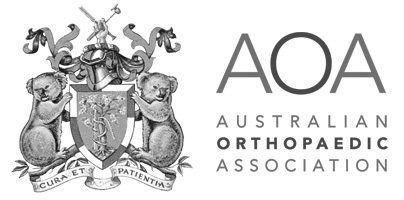Knee Replacement
A total knee replacement (TKR) or total knee arthroplasty is a surgery used to replace a knee joint that is affected by arthritis.
Total Knee Replacement surgery replaces the arthritic knee joint with an artificial metal or plastic replacement parts called the 'prostheses'. These include replacing the:
- end of the femur (thigh bone)
- end of the tibia (shin bone)
- plastic inserted between them and
- usually the patella (knee cap).
The artificial knee joint is made from a surgical-grade metal alloy with a special wear resistant plastic insert. Total Knee Replacement surgery are one of the most successful operations available today with over 90% still functioning well at 15 years.
Prior to surgery you will usually have tried some conservative treatments such as simple analgesics, weight loss, anti-inflammatory medications, modification of your activities, canes, or physical therapy.
Once these have failed it is time to consider surgery.
Candidates for Total Knee Replacement
- between 20 to over 80 years of age
- suffering pain
- restricted mobility interferes with your lifestyle
Benefits of Total Knee Replacement Surgery
- Severe pain that limits your everyday activities including walking, shopping, visiting friends, getting in and out of chair, gardening, etc.
- Pain waking you at night
- Deformity- either bowleg or knock knees
- Stiffness
Components Prostheses
- An upper metal component shaped and sized to fit to femur bone contour
- A flat metal tibial component made of metal alloys fixed to the bone
- A plastic insert designed to bear significant wear
- A patellar button which resurfaces the back of your knee cap.
Total Knee Replacement Procedure
- We will cut down to the bone to expose the bones of the knee joint.
- the damaged portions of the femur and tibia are then cut at the appropriate angles using specialized jigs.
- trial components are then inserted to check the accuracy of these cuts and determine the thickness of plastic required to place in between these two components.
- The patella (knee cap) may be replaced depending on a number of factors and our choice.
- The real components are then inserted with or without cement and the knee is again checked to make sure things are working properly.
- The knee is then carefully closed and drains usually inserted, and the knee dressed and bandaged.
Exercise Preparation
- fit crutches (which should be brought to hospital)
- instruction on partial weight-bearing crutches useage
- learning how to reduce inflammation (icing of the knees), and
- learn postoperative exercise (co contractions, leg lifts with the knee extended, etc).
Return to Work
- prolonged standing,
- heavy lifting,
- bending or
- excessive stair climbing





